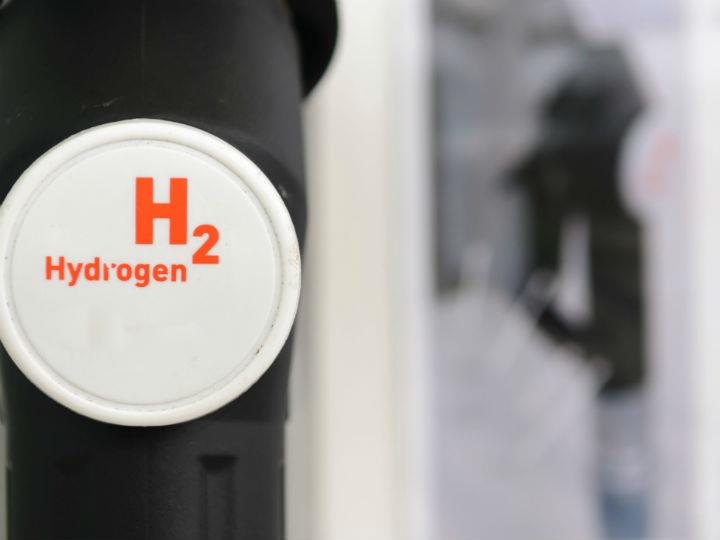by Mike Parr and Simon Minett*
Green Hydrogen & Renewables
Large-scale green hydrogen ipso facto means a massive scale-up of renewables. The strategy notes on page 7 that 80 to 120GW of new PV and wind will be needed to power electrolysers. This is in addition to the new renewables needed to decarbonise the electricity sector.
However, policy on renewables is a member state responsibility and even leaders in renewables such as Germany are struggling with a range of problems which are undermining the move to a massive scale-up of renewables.
By far the biggest of these problems, affecting many member states are low wholesale prices for renewable electricity – caused by zero marginal cost wind and solar generators feeding into the grid.
Perversely, low wholesale prices are the main driver for more renewable subsidies. In failing to explicitly address this mammoth in the room the strategy implicitly assumes that – unaided and undirected – the member states by their individual (and occasionally bi-lateral) actions will solve a flagrant market failure of the type the EU was established to explicitly address.
The strategy should have been much more explicit on massive renewable growth as a critical success factor and have recognised the problem of low wholesale prices.
Large-scale or small-scale or both?
The focus of the strategy is mostly on large-scale systems, pan-European gas networks etc. However, electrolysers connected to small to medium-scale renewables will play a very important role helping to integrate more renewables into distribution networks.
Too much electricity from the local wind farm? Store it as hydrogen to power local transport (or farm transport) or even local heating. Hydrogen needs to be embedded in the European socio-economy structure at all levels and simply cannot be delivered technically, practically or politically by a closed coterie of the big player.
Ambition
Ambition, or lack thereof, is another problem. 6GW by 2024 and 40GW by 2030 will deliver only enough hydrogen to cover, for example, the EU’s ammonia production by 2030. What about all the other sectors that need green hydrogen to decarbonize?
The ambition has the feel of “kicking the can down the road” to a 2030 – 2050 time frame when (rather too magically) all the other sectors that need hydrogen to decarbonise will get it. This lack of ambition leads on to another problem ignored by the strategy.
More Renewables (for hydrogen) means more emissions
The ammonia example above and by extension highlights the failure of the strategy to “join up dots”. The strategy notes that renewables will expand greatly and that PV and wind will account for most of this expansion. Assuming the market failure mentioned previously is solved there remains an additional problem: wind turbines are very heavy users of steel.
100GW of new off-shore wind means emissions due to steel of 50 million tonnes of CO2.
In policy terms this means that the build-out of renewables has to be matched with the installation of electrolysers and at the same time, the conversion as quickly as possible of steel plants to a direct reduction process using hydrogen (from the electrolysers) or in the case of electric arc furnaces, serious circular economy efforts with respect to steel re-use.
The EU has to “bootstrap” its way out of the “more renewables means more emissions” dichotomy and to do so fast. All this requires levels of pan-European planning which go far beyond that proposed in the strategy.
Low Carbon Hydrogen – the illusion of an easier way
The strategy identifies low-carbon hydrogen as a short and medium-term solution. This means steam methane reforming (SMR) coupled to carbon capture and storage (CCS). There is no SMR-CCS plant in existence anywhere in the world that can sequester 90% of CO2 emissions (which would make the hydrogen “low carbon”).
We know this for a fact from a technical report produced by Foster Wheeler for the IEA. According to the strategy, such a system will be with us in the short term. Worse it is an integral part of the “interim” pathway.
Readers may be familiar with the fact that rules on state aid with respect to SMR-CCS are being suspended. The reason for this is that no bank would ever fund a “first of a kind” production system.
Thus member states, such as the Netherlands, which failed to invest in renewables in the period 2010 to 2020, will instead invest in SMR-CCS systems thus keeping their natural gas suppliers in business.
Category Error
At several points in the strategy, the falling costs of electrolysers are linked to the falling cost of green hydrogen. An electrolyser is a production system, for making hydrogen. As with all production systems, capital costs only become relevant at low levels of utilization.
In the case of electrolysers, the cost of a unit of hydrogen levels out for capacity factors or more than 40%. At this point input costs (electricity) account for 80% of overall costs.
Conclusions
The strategy proposed by the Commission is, for the most part, a good first step. It will accelerate the development of a pan-European hydrogen system, which, together with vastly more renewables, energy efficiency and circular economy measures will decarbonise the EU.
However, for this to happen in a timely fashion, the major points raised in this article need to be both recognised and acted upon by the Commission and member states.
*director of PWR, a UK-based company providing market research& technical support in the field of renewables and energy efficiency and founder of Challoch-Energy, a consulting firm
**first published in: www.euractiv.com




 By: N. Peter Kramer
By: N. Peter Kramer
